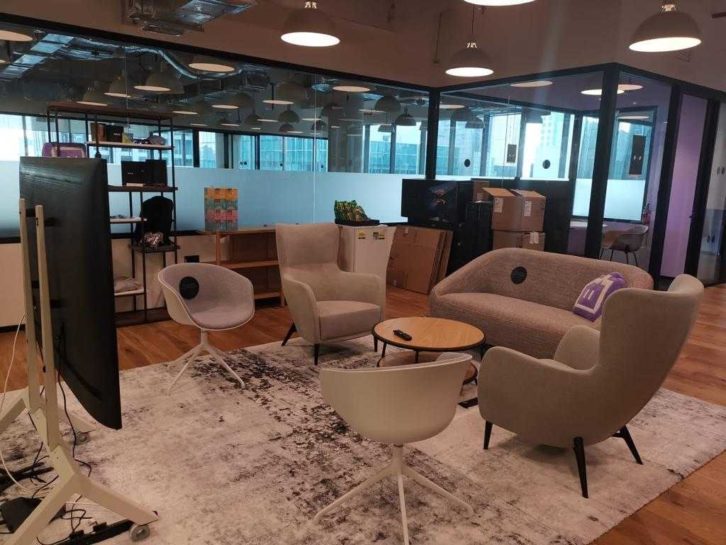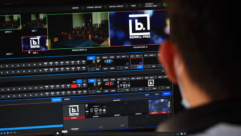
For Twitch’s 1,600 employees worldwide, the vital culture of teamwork, equitable meetings, and frictionless collaboration help everyone thrive. The Twitch brain trust utilized time during the pandemic to level up its collaboration methodologies—for onsite, hybrid, and fully remote meetings. Through surveys and focus groups, Collaboration Services Manager Kevin Little pinpointed collaboration pain points and the strategies to address them.
One of the ways to make communications as seamless as possible is to create a bridge for various platforms and touch points, Little says. Twitch has long been a “Google shop,” and, because it is an Amazon subsidiary, “we live between Amazon Chime and Google Meet.” Little and his colleagues focused on designing and integrating ways of communicating between the codecs.
Little says the key to keeping the workforce agile and connected is listening to users. “We’ve read enough surveys about how Twitch wants to collaborate, and we plan in line with that [data],” he said. “Survey, survey, survey.”
As far as a Unified Collaboration and Communication (UCC) solution, Little said that Twitch chose Cisco to “bridge the gap between all the platforms—allowing internal meetings in the ways people want to meet, so Twitch can be inclusive and equitable at the same time.”
To build systems “with very few failure points,” Little noted, “Twitch is becoming more vendor agnostic.” Driving that functionality-first approach is the focus on remote management, remote access, and managed services. “All of this is done in real time now, so we can see and we can monitor, through a cloud service, or remote management,” he said.
Another notable trend at Twitch: Conference rooms are getting smaller and more multipurpose, trending away from the gilded, siloed executive suites of yore. “From what I’ve seen,” Little shared, “conference rooms are becoming more multipurpose. In some cases, it means smaller, where you can have one-, two-, and three-person meetings, but also have more remote people in the meeting, in real time.”
Today’s conference spaces must also be versatile enough to support bigger events—with the flexible tech backbone to instantly shift from a huddle into a training room or an all-hands meeting space, no matter the size or scope of the room.
There’s no shortage of UCC and videoconferencing platforms, soft codecs, and hardware. But there was a perennial challenge in facilitating collaborations so remote workers didn’t feel “lost,” Little said. That’s where an investment in cameras and audio—endpoints that could track people moving around the conference room—was beneficial.
There should be, ultimately, one platform. “Wherever you are, onsite or remote, you should feel included,” Little pressed. “It’s critical to keeping people engaged and team morale high. Lenke Taylor, our Chief People Officer at Twitch, is really dialed in and passionate about inclusivity and equitable meetings,” he said. “We want the technology to follow that vision.” Not, he, says, vendor roadmaps or media trends. “Put people first.”
What he’s focusing on now is video. “Because we’re such a heavy video streaming company, it is interesting to see where cameras are going—a lot of them are using AR and they’re trying to compose in different ways. A lot of the codecs are going into NDI and IP. I’m interested to see what this will look like over one big network.” –Margot Douaihy










